Can You Work Part-Time on Social Security Disability?

People receiving Social Security disability benefits can work part-time and still receive their monthly payments. The Social Security Administration’s Ticket to Work program and work incentives can help people work while receiving Social Security Disability Insurance (SSDI) or Supplemental Security Income (SSI) benefits. Here is a closer look at Social Security programs that enable people who receive disability benefits to work without losing their entitlement to the benefits.
Ticket to Work Program
The Ticket to Work program supports career development for SSDI and SSI recipients who want to work. This free and voluntary service connects people with disabilities with the support and services they require to find and maintain employment and progress toward financial independence. Participants can receive training, vocational rehabilitation, job referrals, and other employment support services.
Eligible participants can obtain services from approved Ticket to Work service providers, which include:
- Employment Networks (ENs)
- State Vocational Rehabilitation (VR) agencies
- Work Incentives Planning and Assistance (WIPA) projects
- Protection and Advocacy for Beneficiaries of Social Security (PABSS) organizations
Work Incentives
Work incentives are Social Security rules that help people explore work while receiving disability benefits. They help beneficiaries enter, re-enter or continue employment and protect their entitlement to disability payments until they attain self-supporting employment. One can keep some or all of his or her disability benefits as he or she transitions to work and toward financial independence. Beneficiaries also access individualized support services and may keep their medical benefits while they work.
The Social Security Administration (SSA) has a number of work incentives intended to fit a beneficiary’s individual situation.
Trial Work Period
The trial work period is one of the SSA’s work incentives.
Can One Work Part-Time on Social Security Disability?
This work incentive allows people who receive SSDI benefits to test their ability to work. During the period, people receive their full SSDI benefits regardless of how much they earn, provided they report their work activities and continue having a disability. SSDI beneficiaries are entitled to nine trial work months. The nine months do not have to be consecutive, provided they are completed within a rolling 60-month (5-year) period.
The SSA uses the earnings that people make in a month before taxes to calculate if a month counts as a trial work month. In 2022, any month in which a person earns over $970 (after business expenses) or works more than 80 hours per month in self-employment counts as a trial work month. The SSA adjusts the dollar amount of trial work period services every year according to the national average wage index.
Does the Trial Work Period Apply to SSI Beneficiaries?
The trial work period does not apply to SSI benefits.
Extended Period of Eligibility
After completing the 9 months of the trial work period, one starts a 36-month Extended Period of Eligibility (EPE).
Substantial Gainful Activity
During the EPE, the SSA evaluates a beneficiary’s work and earnings based on Substantial Gainful Activity (SGA) levels to decide the person’s eligibility for SSDI benefits. The SGA level is a set monthly wage that helps the SSA determine whether a person’s disability is preventing him or her from earning a living. In 2022, the SGA monthly threshold is $1,350 or $2,260 if one is blind.
How Much Can a Claimant Earn While on Social Security Disability?
There are no limits on a beneficiary’s earnings during the trial work period. However, during the 36 months of the EPE, one can get disability benefits while working if he or she does not make more than $1,350 a month (or 2,260 if blind) in 2022 or his or her SSDI benefits will stop. People get their disability benefits on any month during the EPE that their work and earnings are below the SGA level, and they continue to have a disability.
When determining if a person’s earnings are SGA, the SSA deducts the cost of work expenses that the person has because of his or her disabling impairment. Therefore, when it comes to working and SSD eligibility, people who have impairment-related work expenses could have earnings significantly higher than $1,350 without affecting their eligibility. Examples of work expenses that people may have because of a disability include:
- Specialized work equipment
- Job coach or personal attendant
- Transportation
- Counseling services
- Co-payments for prescriptions
A person does not receive SSDI benefits in the months when his or her countable gross income exceeds the SGA amount. However, there is a grace period, which is a one-time exception to the rule. A person is eligible for SSDI benefits for the first month that his or her work and earnings are above the SGA amount and for the next two consecutive months.
After the grace period, disability benefits will stop if a person continues to earn over the SGA amount. If earnings fall below the SGA amount while the person is still in his or her EPE, the SSA can restart the SSDI benefits without the person having to complete a new application. A person’s benefits will terminate if he or she works above the SGA level on any month after the 36-month EPE ends.
People do not get this work incentive under the SSI program.
Expedited Reinstatement
Expedited Reinstatement (EXR) is a safety net for people who return to work successfully and lose their eligibility for SSDI and SSI benefits. If disability payments end due to work and earnings and a person stops working within five years of when the benefits stopped, the person may have the benefits restarted right away through an EXR request. EXR makes it possible for people to have their disability benefits started again without having to submit a new application.
Through the EXR provision, people can receive temporary cash benefits for up to six months while the SSA processes their benefits reinstatement. People may also be eligible for Medicaid or Medicare during the provisional benefit period.
Who Can Be Reinstated?
A person can request EXR and have his or her benefits restarted if:
- Previous SSDI eligibility was terminated because of performing SGA or previous entitlement to SSI benefits was terminated due to extra earned income or unearned and earned income combined
- The person is unable to work above the SGA level on the month he or she applies for EXR
- The person has a medical impairment that is related to or is the same as the original disability
If the SSA approves a person’s application for expedited EXR, he or she will begin an Initial Reinstatement Period (IRP) on the month the agency reinstates his or her disability benefits. The IRP ends when a person receives a total of 24 months of payable benefits. The months do not have to be consecutive.
SSDI beneficiaries will receive benefits on any month their earnings fall below the SGA level during the IRP. For SSI recipients, the regular counting income rules will be applied. When SSDI beneficiaries complete the IRP, they are entitled to a new trial work period, EPE, 60-month period to file a request for EXR, and an extended Medicare coverage period.
Student Earned-Income Exclusion (SEIE)
This provision allows students with disabilities who receive SSI benefits and are under 22 years old, go to school or attend training programs regularly to exclude some earnings from their income. In 2022, the SSA can exclude up to $2,040 of a student’s monthly earnings and a maximum of $8,230 a year when calculating one’s SSI benefit.
Plan to Achieve Self-Support (PASS)
A PASS allows a person to set aside income from other sources besides his or her SSI benefits for a certain period to pursue a work goal that will eliminate or reduce the disability benefits he or she currently receives. For example, a person who receives wages, SSDI benefits or some other income can set aside some money to start a business or pay for vocational training, education, or assistive technology for employment-related purposes.
The SSA does not count the income one sets aside under a PASS when calculating the person’s income or resources that affect his or her SSI payment amount. A PASS can help a person maintain eligibility for SSI benefits and may increase his or her SSI payment amount.



 Click-to-call
Click-to-call
 Live Chat
Live Chat